*NURSING > EXAM > Patho Midterm Exam>PATHO 370Patho Midterm Exam Questions And Answers Verified (All)
Patho Midterm Exam>PATHO 370Patho Midterm Exam Questions And Answers Verified
Document Content and Description Below
IDTERM EXAM Question 1 0 out of 0 points Gas exchange occurs in which of the respiratory system's structures? Selected Answer: Trache a Correct Answer: Alveoli Response Feedback: The al... veoli allow air to come in indirect contact with the bloodstream through the pulmonary capillary system. This alveolar membrane, which is one cell thick, allows carbon dioxide to diffuse into the alveoli from the bloodstream and oxygen to diffuse to the bloodstream from the alveoli. Sinuses are hollow spaces found in the skull. The trachea is a structure that allows passage of gases to and from the gas exchange units (alveoli). Bronchi are branches of the conducting airways that allow passage of gases to and from the gas exchange units (alveoli). Question 2 0 out of 0 points A patient with heart failure reports awakening intermittently with shortness of breath. Which terms appropriately describes this clinical manifestation? Selected Answer: Dyspnea Correct Answer: Paroxysmal nocturnal Response Feedback: Paroxysmal nocturnal dyspnea refers to intermittent attacks of severe dyspnea that occur during the night. Dyspnea is a general term referring to difficulty breathing. Cyanosis is the appearance of a blue or purple coloration of the skin or mucous membranes due to the tissues near the skin surface being low on oxygen. Bradypnea describes abnormal slowness of breathing. Question 3 0 out of 0 points What factor causes a congenital heart disease to produce cyanosis? Selected Answer: Left-to-right shunting of blood Correct Answer: Right-to-left shunting of blood Response Feedback: Disorders that result in right-to-left shunting cause cyanosis. A left-to-right shunt occurs when oxygenated blood from the left side of the heart or aorta flows back into the right side to be recirculated through the lungs. The blood reaching the systemic circulation is oxygenated and the infant is not cyanotic (acyanotic defect). However, the right side of the heart has an increased workload because of the extra shunt blood. In time, the overload of the right side of the heart can result in right ventricular hypertrophy and high right-sided heart pressures. Large ventricular septal defects may be apparent at birth because of rapidly developing rightsided heart failure and a loud systolic murmur. The majority of atrial septal defects occur at the location of the foramen ovale. The abnormal septal opening may be of variable size. Small defects (1 cm) are well tolerated. Even larger atrial septal defects may be asymptomatic for many years as long as the shunt flow is left to right and therefore acyanotic. Question 4 0 out of 0 points A patient education intervention that will help decrease the emergence of resistant infections is to instruct the patient to Selected Answer: Take all the antibiotics ordered even if feeling well after a few days to prevent antibiotic defiant bacteria Correct Answer: Take all the antibiotics ordered even if feeling well after a few days to prevent antibiotic defiant bacteria Response Feedback : The patient should take all the antibiotics ordered, even if feeling better, to eradicate the moderately resistant microorganisms. Viruses are not impacted by antibacterial medications. Sharing antibiotics indicates that the full course of the medication isn’t being taken, and so contributing to the development of resistant microorganisms. If medication is stopped prematurely, moderately resistant organisms are selected for and become the predominant species, making it more difficult to eradicate next time. Question 5 0 out of 0 points Cellular hypoxia results in Selected Answer: Failure of the sodium-potassium pump Correct Answer: Failure of the sodium-potassium pump Response Feedback: Hypoxia is a loss of oxygen to the cell that causes ATP activity to cease. ATP provides the power required to drive the sodium-potassium pump. pH decreases in hypoxia (respiratory acidosis). Hypoxia is a loss of oxygen to the cell that causes ATP activity to cease. Deposits of calcium salts occur in conditions of altered calcium intake, excretion, or metabolism. Question 6 0 out of 0 points What is the underlying problem common among all type [Show More]
Last updated: 1 year ago
Preview 1 out of 57 pages
Instant download
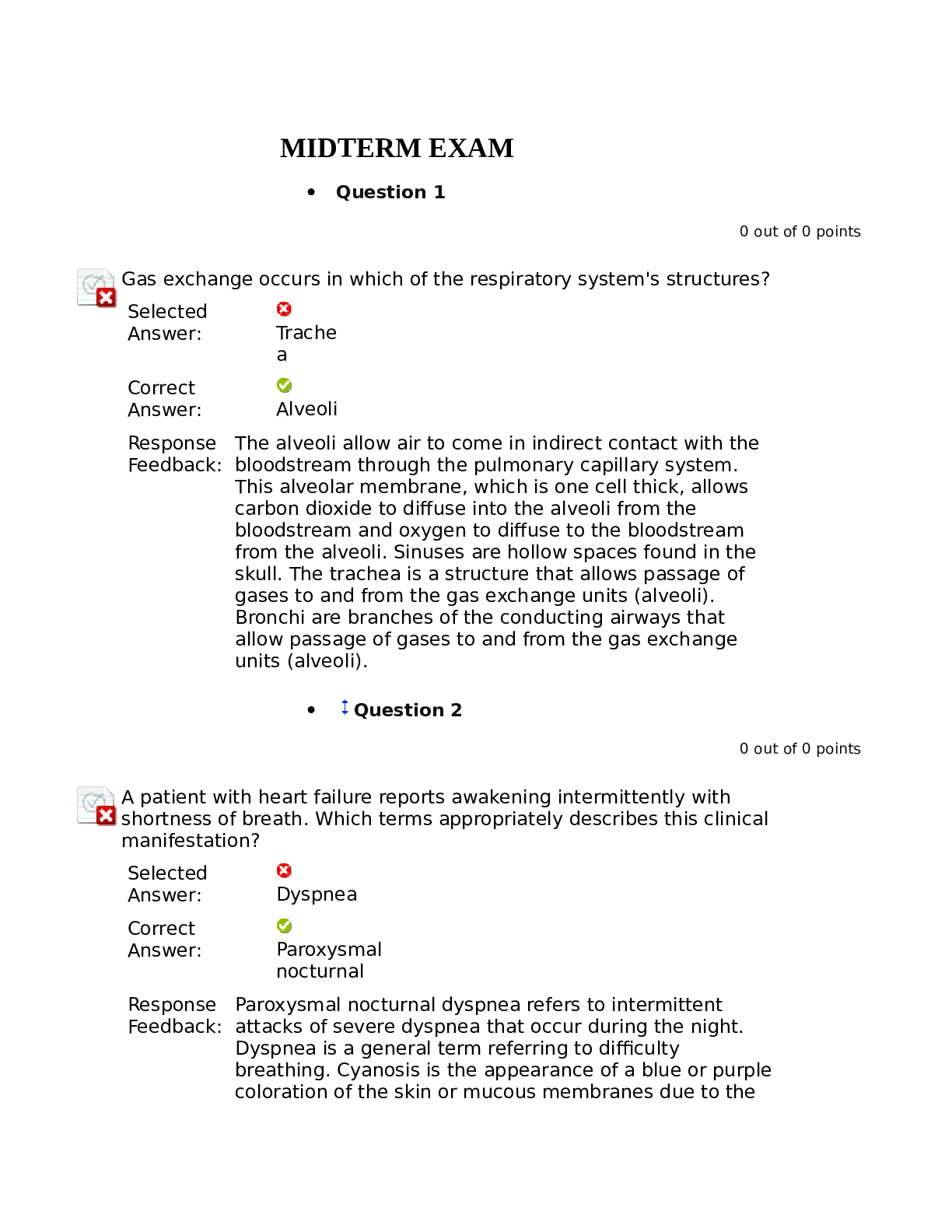
Buy this document to get the full access instantly
Instant Download Access after purchase
Add to cartInstant download
Reviews( 0 )
Document information
Connected school, study & course
About the document
Uploaded On
Jul 02, 2022
Number of pages
57
Written in
Additional information
This document has been written for:
Uploaded
Jul 02, 2022
Downloads
0
Views
30

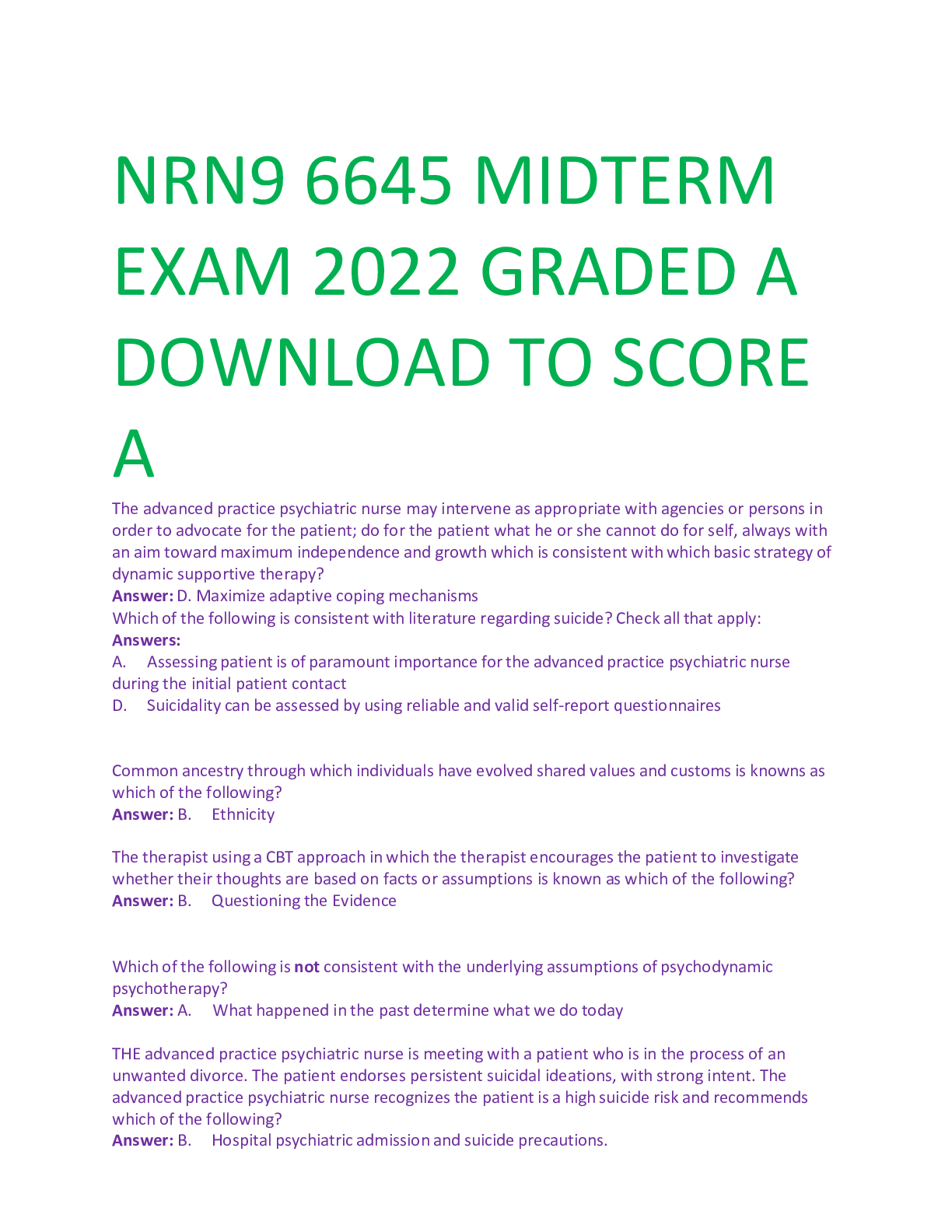
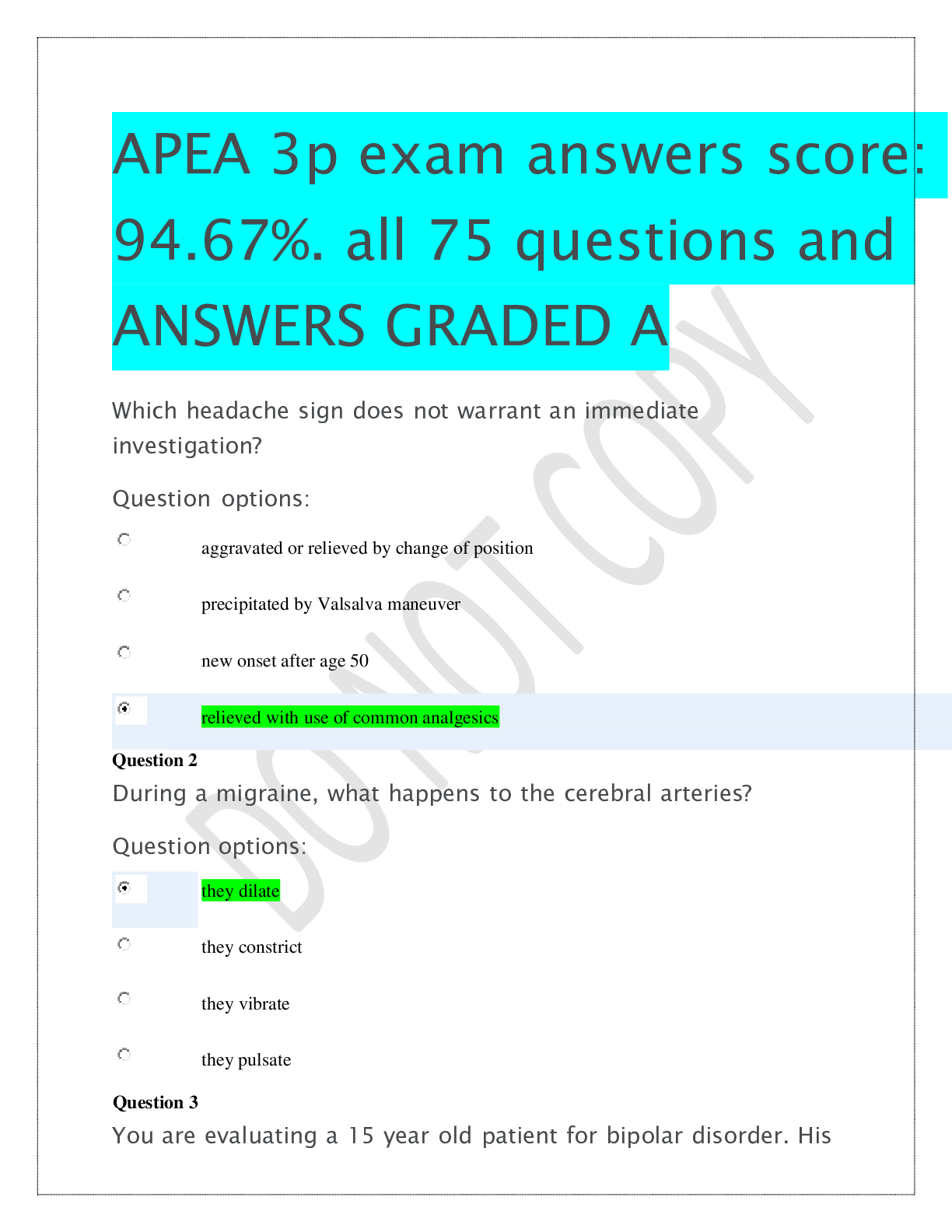

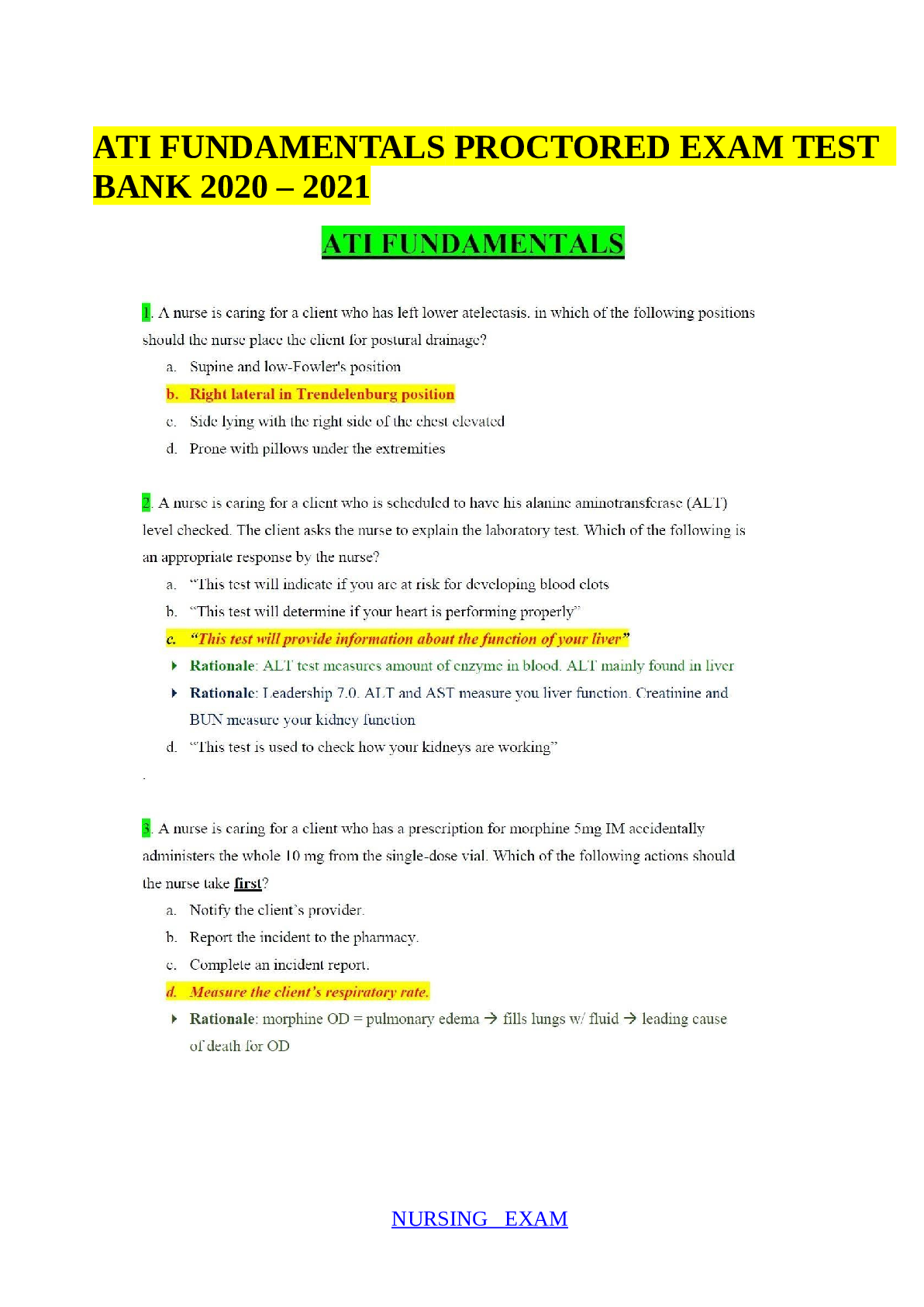
.png)
.png)


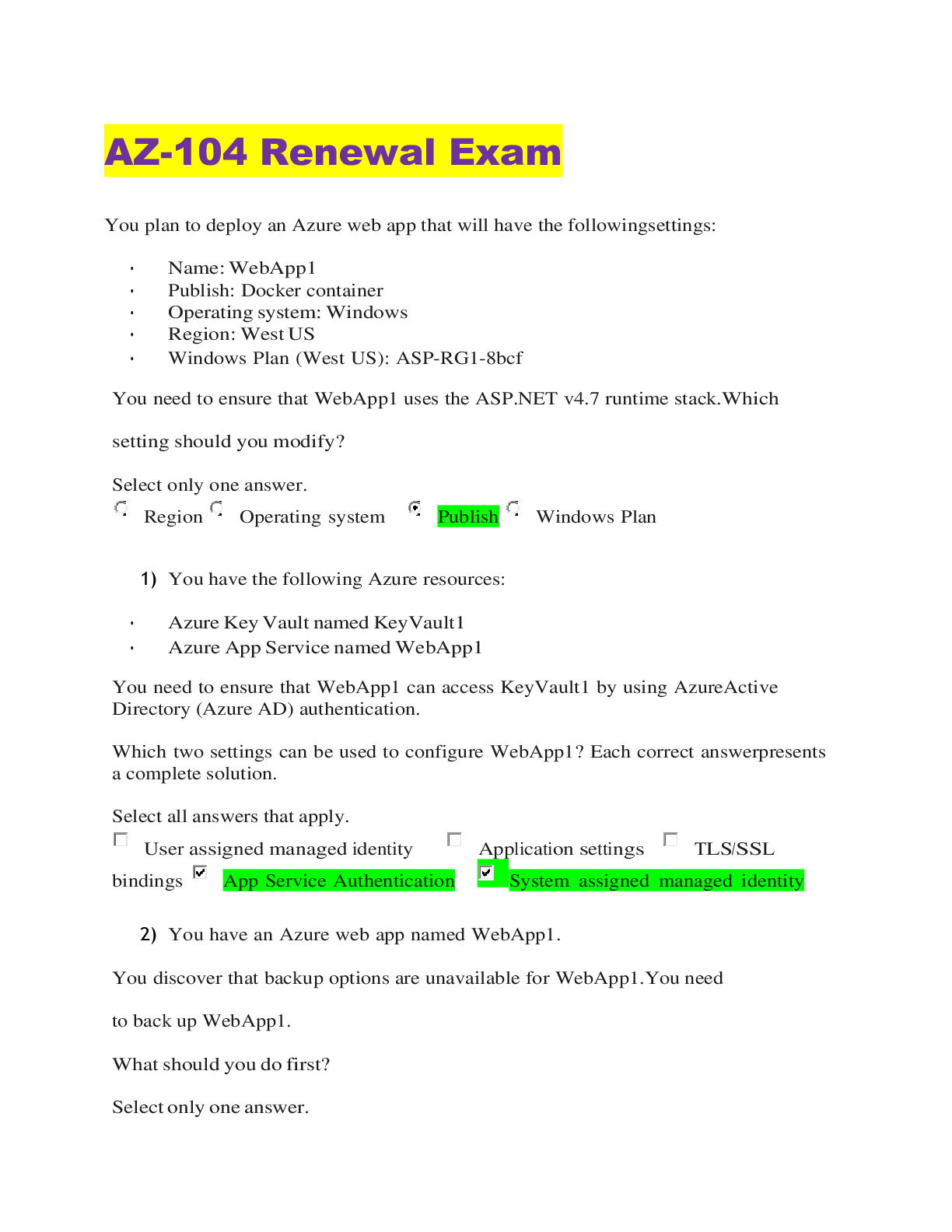
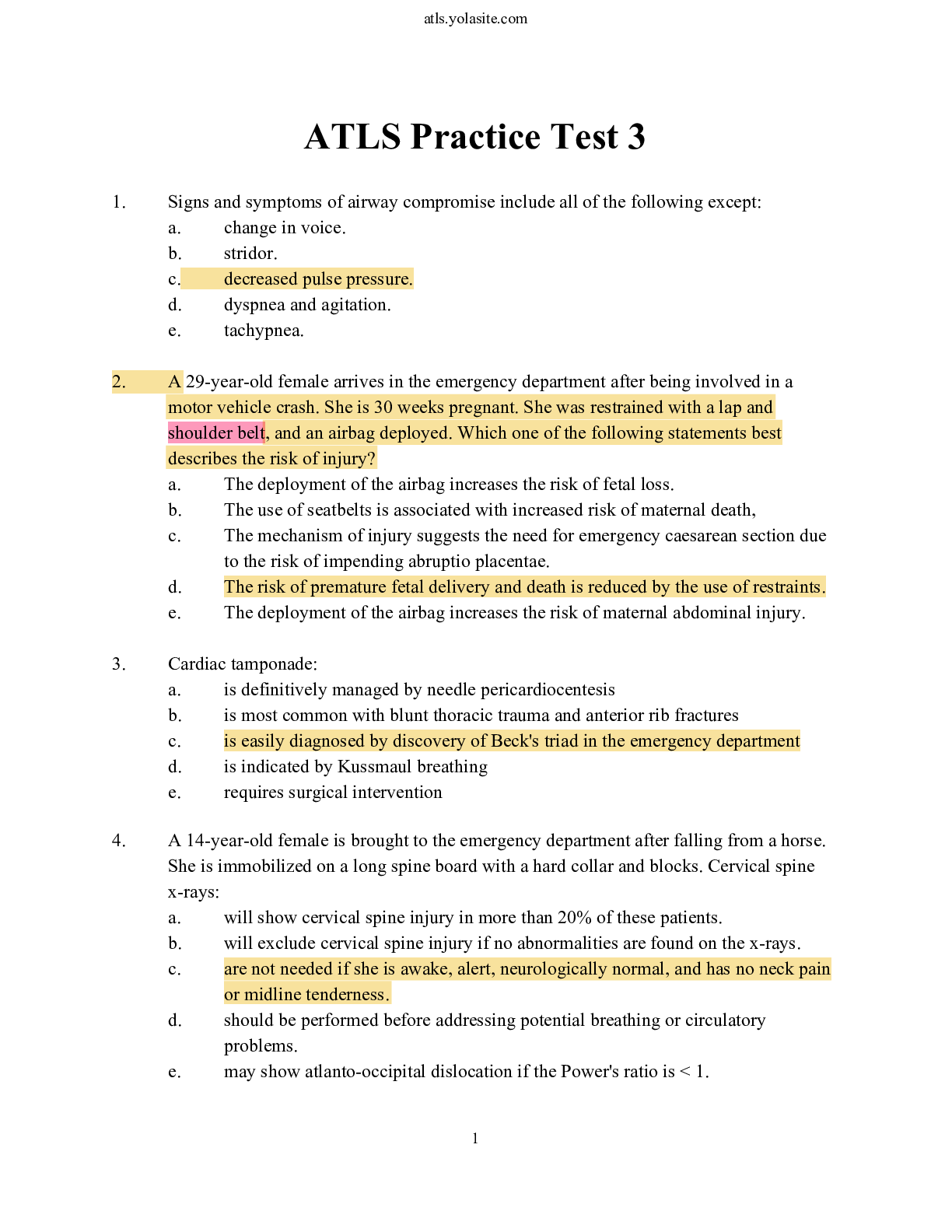




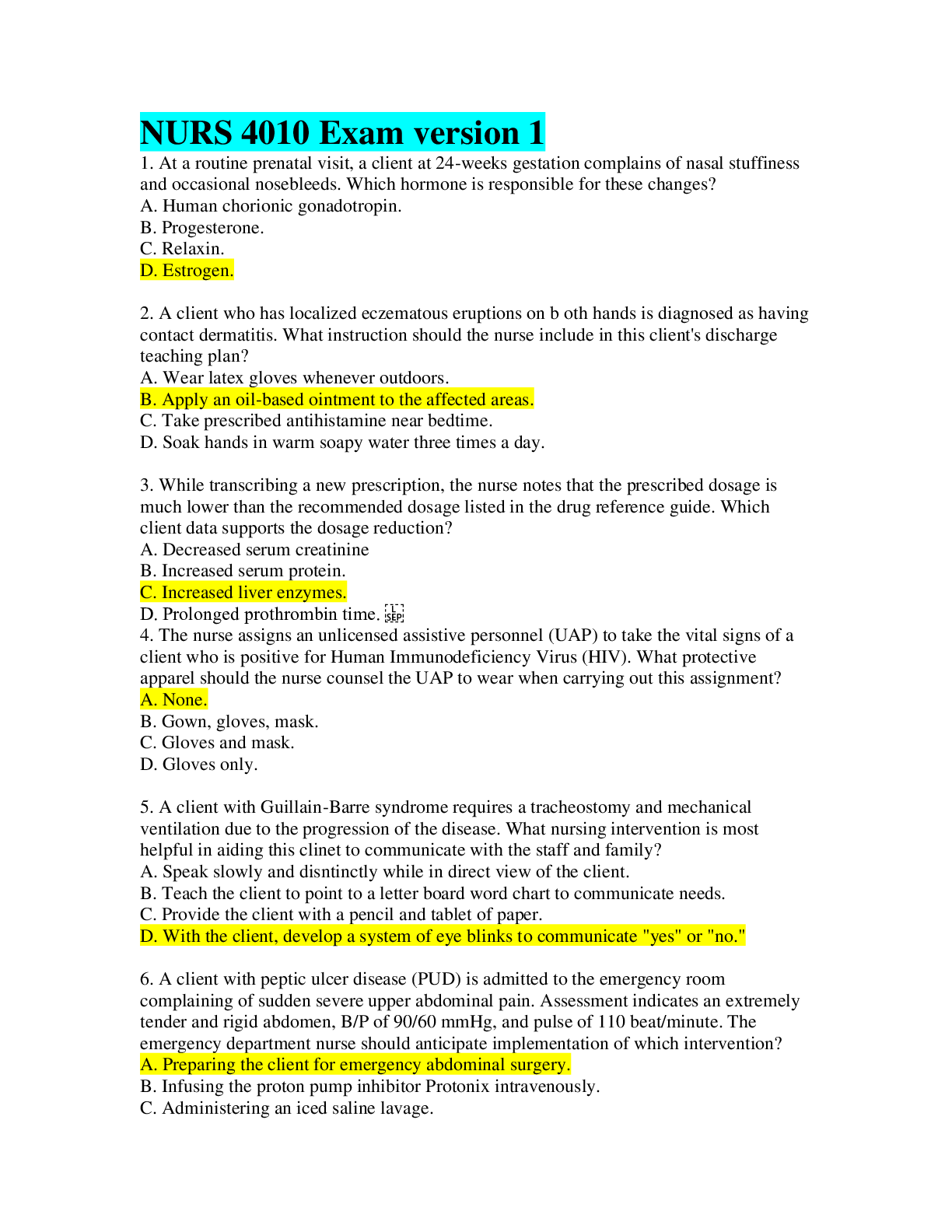
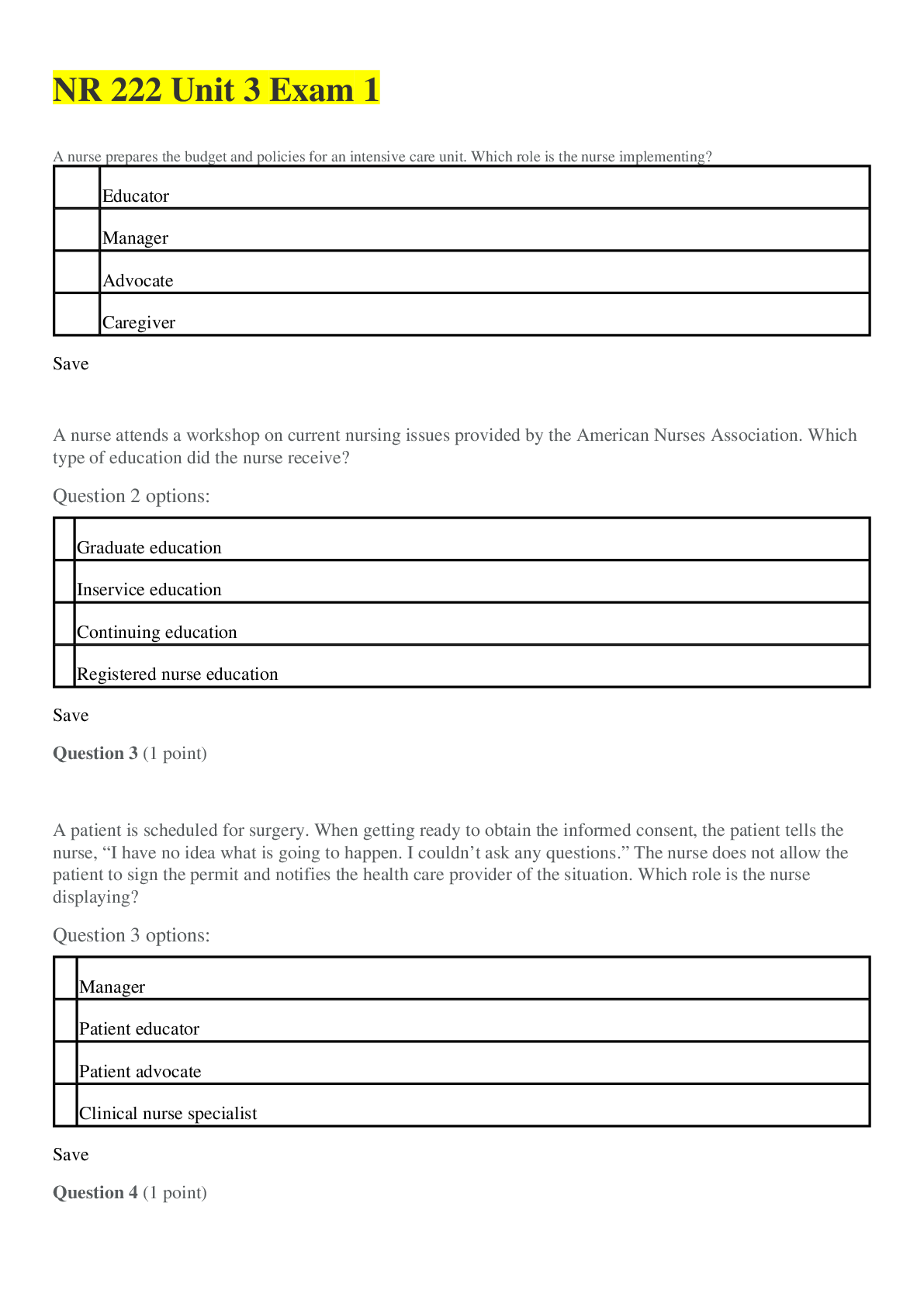


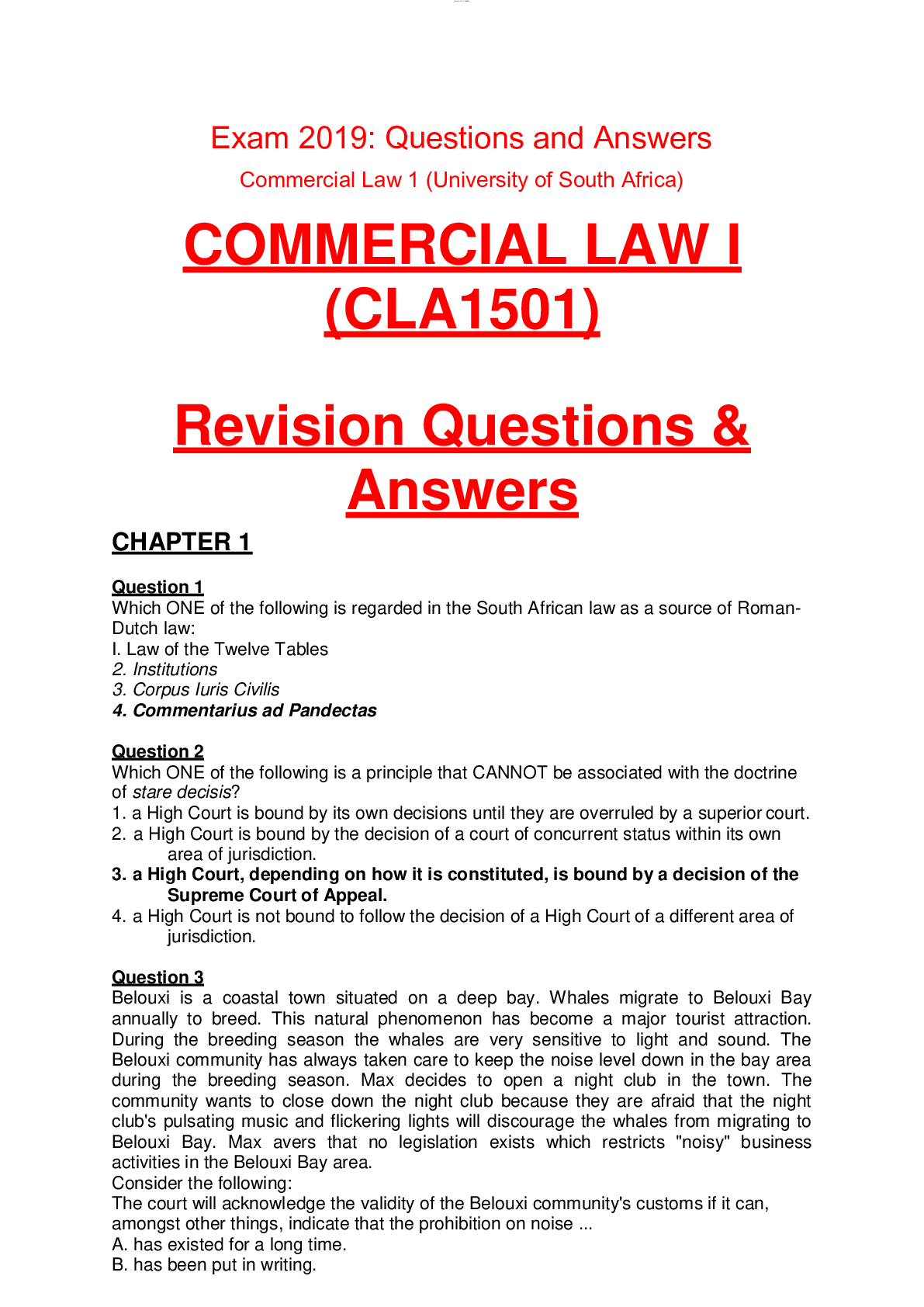


.png)


